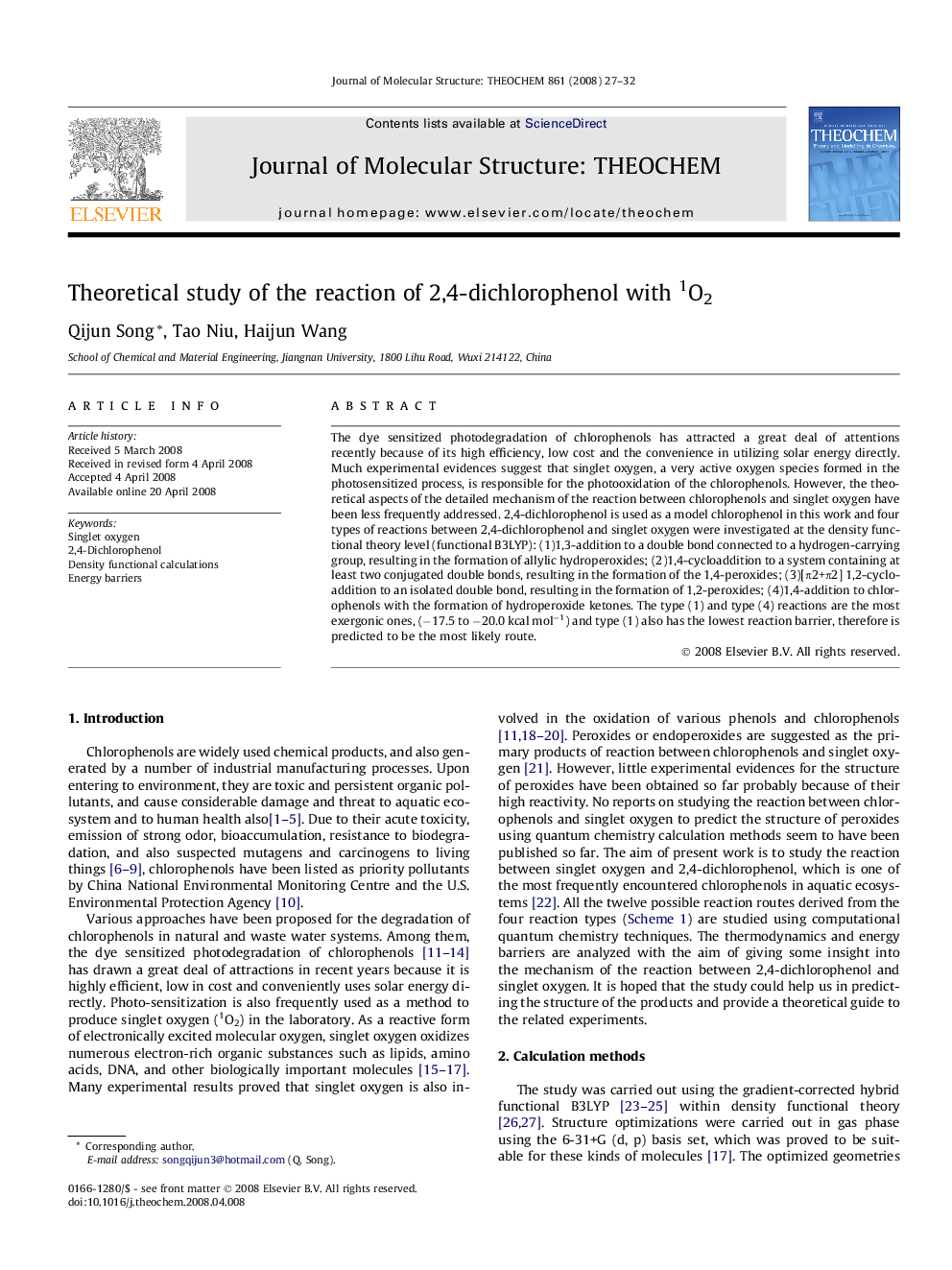| کد مقاله | کد نشریه | سال انتشار | مقاله انگلیسی | نسخه تمام متن |
|---|---|---|---|---|
| 5418105 | 1506940 | 2008 | 6 صفحه PDF | دانلود رایگان |
عنوان انگلیسی مقاله ISI
Theoretical study of the reaction of 2,4-dichlorophenol with 1O2
دانلود مقاله + سفارش ترجمه
دانلود مقاله ISI انگلیسی
رایگان برای ایرانیان
کلمات کلیدی
موضوعات مرتبط
مهندسی و علوم پایه
شیمی
شیمی تئوریک و عملی
پیش نمایش صفحه اول مقاله

چکیده انگلیسی
The dye sensitized photodegradation of chlorophenols has attracted a great deal of attentions recently because of its high efficiency, low cost and the convenience in utilizing solar energy directly. Much experimental evidences suggest that singlet oxygen, a very active oxygen species formed in the photosensitized process, is responsible for the photooxidation of the chlorophenols. However, the theoretical aspects of the detailed mechanism of the reaction between chlorophenols and singlet oxygen have been less frequently addressed. 2,4-dichlorophenol is used as a model chlorophenol in this work and four types of reactions between 2,4-dichlorophenol and singlet oxygen were investigated at the density functional theory level (functional B3LYP): (1)1,3-addition to a double bond connected to a hydrogen-carrying group, resulting in the formation of allylic hydroperoxides; (2)1,4-cycloaddition to a system containing at least two conjugated double bonds, resulting in the formation of the 1,4-peroxides; (3)[Ï2+Ï2] 1,2-cycloaddition to an isolated double bond, resulting in the formation of 1,2-peroxides; (4)1,4-addition to chlorophenols with the formation of hydroperoxide ketones. The type (1) and type (4) reactions are the most exergonic ones, (â17.5 to â20.0 kcal molâ1) and type (1) also has the lowest reaction barrier, therefore is predicted to be the most likely route.
ناشر
Database: Elsevier - ScienceDirect (ساینس دایرکت)
Journal: Journal of Molecular Structure: THEOCHEM - Volume 861, Issues 1â3, 30 July 2008, Pages 27-32
Journal: Journal of Molecular Structure: THEOCHEM - Volume 861, Issues 1â3, 30 July 2008, Pages 27-32
نویسندگان
Qijun Song, Tao Niu, Haijun Wang,